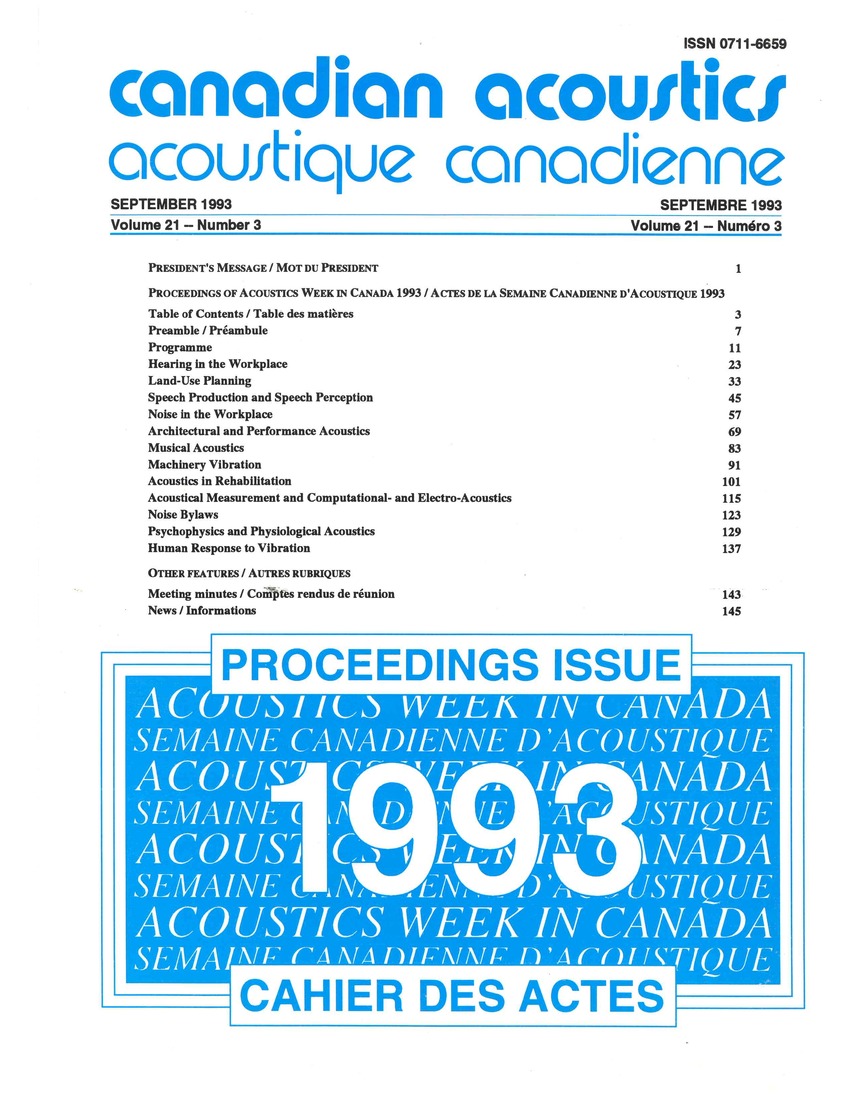How grouping improves the categorisation of frequency in song birds and humans and why song birds do it better
Mots-clés :
hearing, musical acoustics, frequency categorisation, frequency discrimination, song bird, song notes, conspecifics, song frequency, heterospecifics, open-ended categories, zebra finches, humansRésumé
There is evidence that song bird species produce, recognize, and discriminate song notes on the basis of frequency within a range. How song birds do this is unknown. One hypothesis is that song birds represent individual frequencies separately, somehow knowing which identify conspecifics. This hypothesis suggests that song birds memorise individual song frequencies as a list without underlying rules (see Herrnstein, 1990). Because of natural continuous variability in song frequency within and among individuals (Borror, 1961; Weisman et al. 1990) song birds might need to memorize a number of individual frequencies to discriminate conspecifics from heterospecifics. A second hypothesis is that song birds categorise song notes into frequency ranges, forming large open-ended categories (see Herrnstein, 1990), and use knowledge about these ranges in song. Here, song birds treat exemplars of a frequency range collectively as suggested by theories of category learning (Keller & Schoenfeld, 1950). To decide between these hypotheses we trained zebra finches and, for comparison, humans in a (distributed S+) discrimination that required memorisation of individual frequencies and in a (compact S+) discrimination that could be acquired by classifying frequencies into rangesFichiers supplémentaires
Publié-e
Comment citer
Numéro
Rubrique
Licence
Author Licensing Addendum
This Licensing Addendum ("Addendum") is entered into between the undersigned Author(s) and Canadian Acoustics journal published by the Canadian Acoustical Association (hereinafter referred to as the "Publisher"). The Author(s) and the Publisher agree as follows:
-
Retained Rights: The Author(s) retain(s) the following rights:
- The right to reproduce, distribute, and publicly display the Work on the Author's personal website or the website of the Author's institution.
- The right to use the Work in the Author's teaching activities and presentations.
- The right to include the Work in a compilation for the Author's personal use, not for sale.
-
Grant of License: The Author(s) grant(s) to the Publisher a worldwide exclusive license to publish, reproduce, distribute, and display the Work in Canadian Acoustics and any other formats and media deemed appropriate by the Publisher.
-
Attribution: The Publisher agrees to include proper attribution to the Author(s) in all publications and reproductions of the Work.
-
No Conflict: This Addendum is intended to be in harmony with, and not in conflict with, the terms and conditions of the original agreement entered into between the Author(s) and the Publisher.
-
Copyright Clause: Copyright on articles is held by the Author(s). The corresponding Author has the right to grant on behalf of all Authors and does grant on behalf of all Authors, a worldwide exclusive license to the Publisher and its licensees in perpetuity, in all forms, formats, and media (whether known now or created in the future), including but not limited to the rights to publish, reproduce, distribute, display, store, translate, create adaptations, reprints, include within collections, and create summaries, extracts, and/or abstracts of the Contribution.


